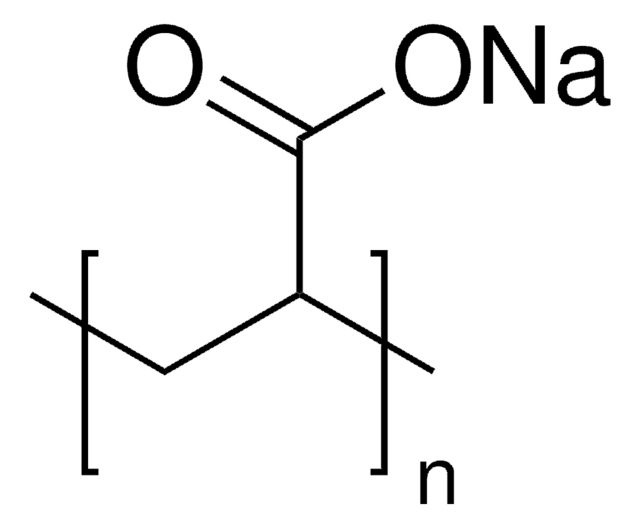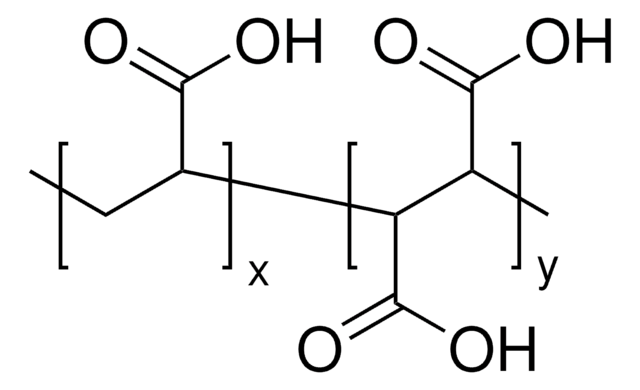416010
Poly(acrylic acid, sodium salt) solution
average Mw ~1,200, 45 wt. % in H2O
Synonym(s):
PAA, Sodium polyacrylate
About This Item
Recommended Products
form
viscous liquid
Quality Level
mol wt
average Mw ~1,200
concentration
45 wt. % in H2O
refractive index
n20/D 1.43
density
1.32 g/mL at 25 °C
SMILES string
[Na]OC(=O)C=C
InChI
1S/C3H4O2.Na/c1-2-3(4)5;/h2H,1H2,(H,4,5);/q;+1/p-1
InChI key
NNMHYFLPFNGQFZ-UHFFFAOYSA-M
Looking for similar products? Visit Product Comparison Guide
Related Categories
Application
Itcan be used as a draw solute in forward osmosis process due to its flexibilityin structural configuration and high solubility in water. They can be preferredover conventional ionic salts as they can produce comparable water flux andmuch lower reverse leakages.
It can also be used to study the effect of the molecular weight of PAAon crystal nucleation and the growth of CaCO3 during thecrystallization process.
Storage Class Code
10 - Combustible liquids
WGK
WGK 1
Flash Point(F)
Not applicable
Flash Point(C)
Not applicable
Personal Protective Equipment
Choose from one of the most recent versions:
Already Own This Product?
Find documentation for the products that you have recently purchased in the Document Library.
Customers Also Viewed
Articles
Layer-by-Layer (LbL) Assembly, A "Gentle Yet Flexible" Method Toward Functional Biomaterials
We present an article that discusses two applications in particular; first, using these layers as polyelectrolyte membranes to control permeability.
Our team of scientists has experience in all areas of research including Life Science, Material Science, Chemical Synthesis, Chromatography, Analytical and many others.
Contact Technical Service



